4 Solutions to Fix “Display driver failed to start” Error
“Display driver failed to start” is an error message which usually appears as a Windows 10 notification. It also notifies the users about the second driver which is going to be used. The error message is along the lines of:
Display driver failed to start; using Microsoft Basic Display Driver instead. Check Windows Update for a newer display driver.
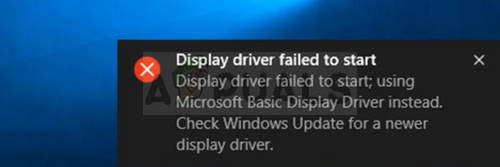
The problem is often accompanied by PC instability, crashing, or reduced performance in video games. Follow the methods we have prepared below in order to resolve the problem as they have worked for other people!
What Causes the “Display Driver Failed to Start” Error on Windows?
The real cause of this problem is often hard to pinpoint as the methods which can be used to resolve it are pretty general, e.g. running a troubleshooter or updating Windows to the latest version.
The issue is related to the graphics card driver and updating them to the latest version available is always a great idea. It’s also helpful to disable some of the visual effects on your computer to reduce the impact on the video card.
Solution 1: Run the Troubleshooter
Even though troubleshooters are rarely able to resolve the problem correctly, many users have reported that running the troubleshooter managed to resolve the problem easily. It’s probably the easiest method you can try out so make sure you start out with this method!
Windows 10 Users:
- Search for Windows 10 Settings in the Start menu and click on the first result at the top. You can also click the cog button directly (located at the lower left section of the Start menu) or you can click the Windows Key + I key combination in order to open it directly.
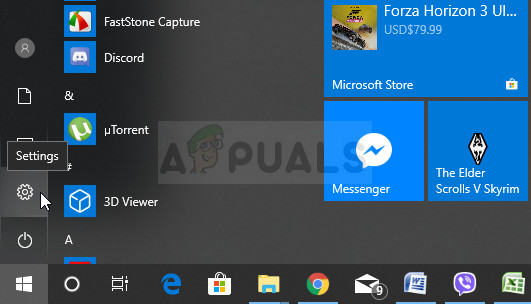
- Locate the Update & security entryat the bottom of the Settings window and click on it.
- Go to the Troubleshoot tab at the left side menu and check under the Find and fix other problems section.
- Hardware and devices troubleshooter should be right there at the bottom so make sure you open it and follow the instructions on the screen.
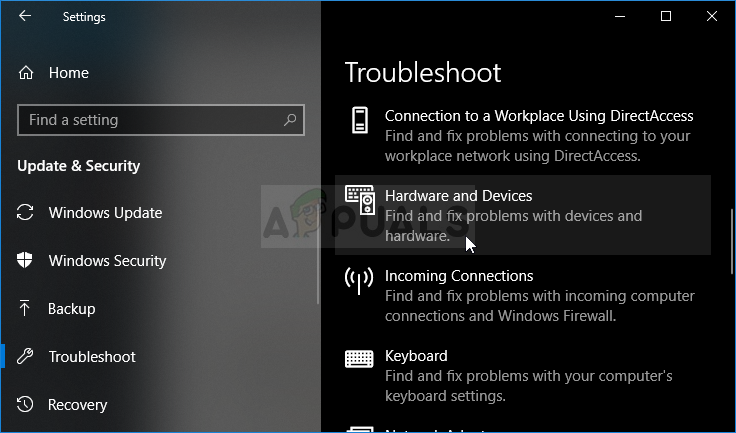
- Check to see if the problem has been resolved and if the error notification still appears!
Other versions of Windows:
- Open Control Panel by searching for the utility in the Start button or by clicking the Search button (Cortana) button at the left part of your taskbar (bottom left part of your screen.
- You can also use the Windows Key + R key combo where you should type “control.exe” and click Run which will also open Control Panel directly.
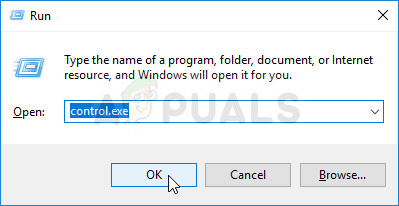
- After Control Panel opens, change the view to Category and click on View devices and printers under Hardware and Sound in order to open this section.
- Head over to the Devices section, right-click on your PC’s icon and choose the Troubleshoot You might also be able to see a yellow triangle next to the PC icon and the Troubleshoot entry in the context menu.
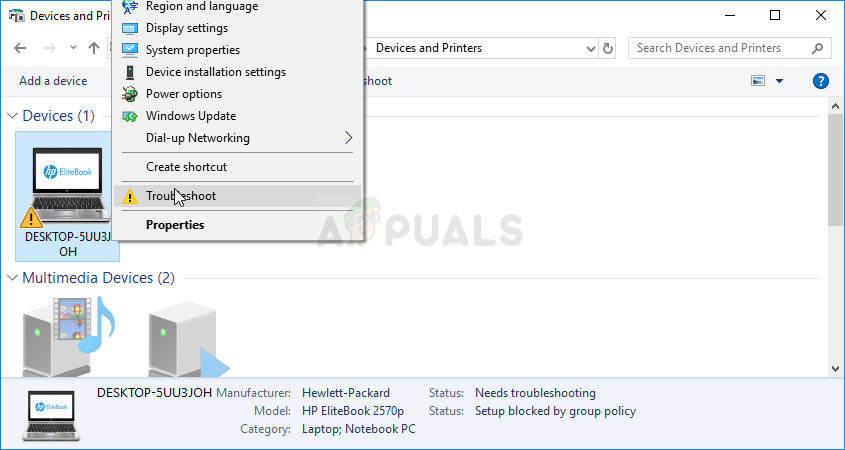
- Confirm any dialog options which may pop up and follow the instructions which will appear on-screen.
Solution 2: Install the Latest Graphics Card Drivers
This is generally the best thing you can do in order to resolve such a problem occurring with your graphics cards. Graphics card drivers are the main channel of communication between the computer and the graphics card and it’s important to have the latest drivers installed. Make sure you do so by following the instructions below!
- Click the Start menu button, type in “Device Manager” afterward, and select it from the list of available results by simply clicking the first one. You can also tap the Windows Key + R key combo in order to bring up the Run dialog box. Type in “devmgmt.msc” in the dialog box and click OK in order to run it.
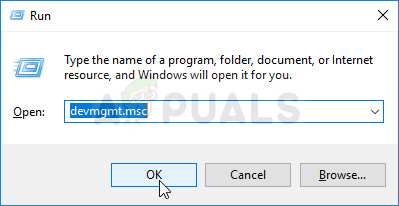
- Since it’s the video card driver you want to update on your computer, expand the Display adapters section, right-click on your graphics card and choose the Uninstall Device
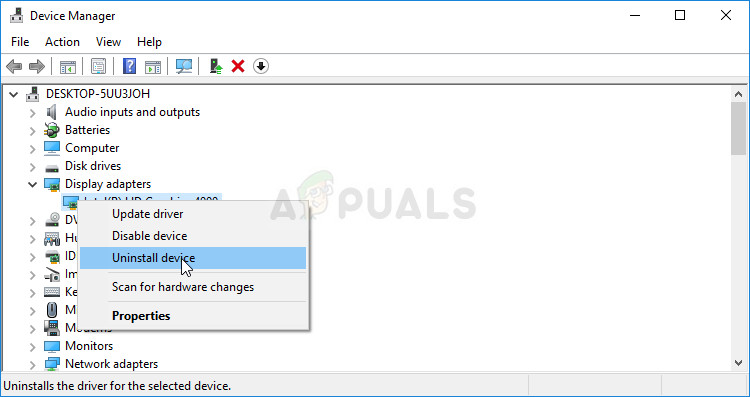
- Confirm any dialogues or prompts which may ask you to confirm the uninstallation of the current graphics device driver and wait for the process to complete.
- Look for your graphics card driver on NVIDIA’s or AMD’s Input the required information about the card and your operating system and click on Search.
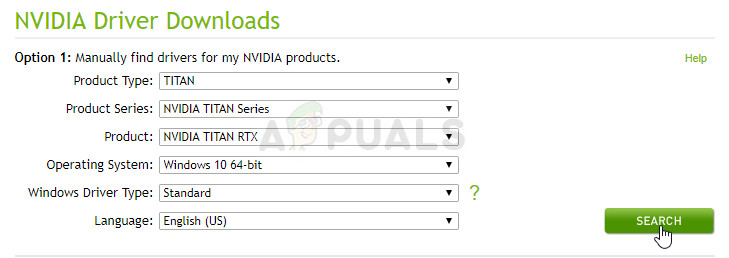
- A list of all available drivers should appear. Make sure you select the most recent entry, click on its name and the Download button afterward. Save it to your computer, open it, and follow the instructions on-screen in order to install it. Check to see if the “Display driver failed to start” error still appears!
Solution 3: Disable Certain Visual Effects
The problem with the driver may as well be the fact that it needs to run plenty of visual effects for your computer and it simply fails to execute. Disabling certain effects will have no major impact on your computer’s performance but it might resolve this issue once and for all. Try this out if the methods above have failed to help!
- Right-click on the This PC entry which can usually be found on your Desktop or in your File Explorer. Choose the Properties entry.
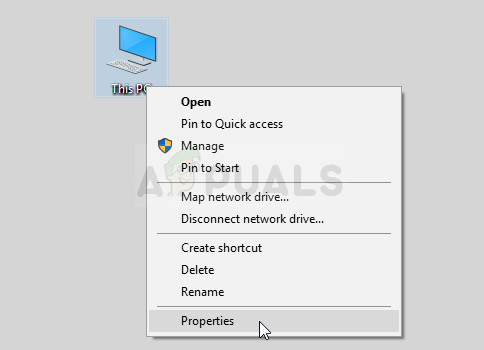
- Click on the “Advanced system settings” button at the right of the window and navigate to the Advanced Under the Performance section, click on Settings and navigate to the Visual Effects tab of this window.
- Click the radio button next to the Adjust for best performance option in order to have Windows automatically determine what to include and what to leave out regarding the settings. You can also make some manual changes to see what to keep and what to leave.
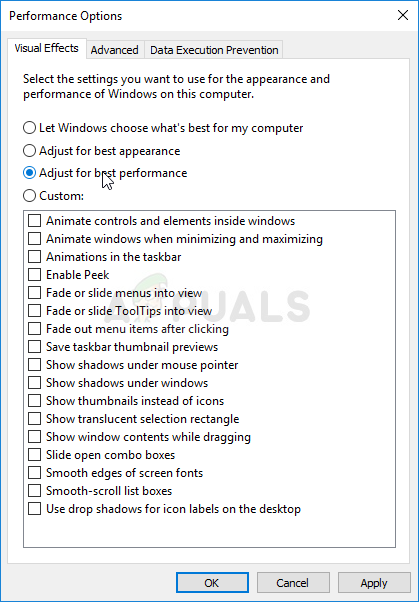
- Click the OK button after you finish and check to see if the error message still pops up!
Solution 4: Update Windows to the Latest Version
The latest versions of Windows 10 seem to have resolved this problem for good as long as it wasn’t caused by third-party programs. Updating your operating system to the latest version is always helpful when it comes to dealing with similar errors and users have reported that the latest Windows 10 versions actually deal with this problem in specific.
- Use the Windows Key + I key combination in order to open Settings on your Windows PC. Alternatively, you can search for “Settings” by using the search bar located at the taskbar.

- Locate and open the “Update & security” section in the Settings Stay in the Windows Update tab and click on the Check for updates button under the Update status in order to check whether there is a new version of Windows available.
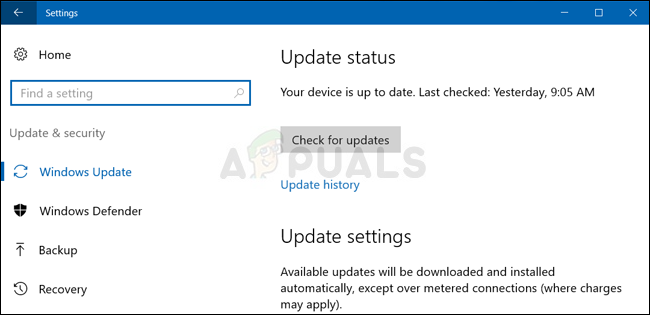
- If there is one, Windows should install the update immediately and you will be prompted to restart your computer afterward.




